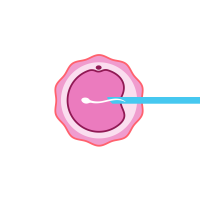
A new website developed by researchers at the University of Melbourne, in collaboration with Cochrane, is helping IVF patients navigate the complex and often confusing world of optional treatment add-ons.
The 'Evidence-based IVF' website provides clear, impartial summaries of the scientific evidence behind interventions like endometrial scratching, assisted hatching, and time-lapse embryo imaging. These optional extras are frequently offered by fertility clinics, but many lack robust evidence of effectiveness and can add significant costs to treatment.
Dr Sarah Lensen, a Senior Research Fellow at the University of Melbourne and lead researcher on the project, said the website aims to fill a critical information gap for patients.
"Our research shows that over 80% of Australian IVF patients use at least one add-on during their treatment, often based on information from clinic websites or online forums, which may not always be reliable," said Dr Lensen.
The website was co-designed with input from patients, clinicians, and embryologists to ensure the information is accessible and relevant. It includes plain-language explanations of each add-on, summaries of the latest research evidence, information on potential risks and costs, and practical considerations for patients.
In addition to individual add-on summaries, the website features a “Questions to ask your specialist” page designed to support meaningful discussions between patients and clinicians. This tool encourages patients to ask critical questions—such as what evidence supports the use of a particular add-on, what it will cost, and whether it is likely to benefit people in their situation. The aim is to support informed, shared decision-making in a clinical setting.
The Evidence-based IVF website will be regularly updated to reflect new research and currently covers a range of optional extras, including acupuncture, corticosteroids, EmbryoGlue, and preimplantation genetic testing of embryos.
Many Cochrane authors and editors have been involved in the evidence synthesis behind the website.
For more information, visit https://www.unimelb.edu.au/ivf
